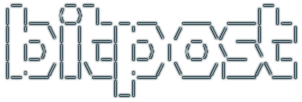This toolkit was written by a guy down the road over in Chapel Hill, it seems. The idea seems to be to generate and configure MVC-structured PHP code with RESTful web access. Supports multiple apps with one installation. Works for me.
I grabbed the 0.20 release. It comes with a web-based front end that will mock up your initial application code. Unfortunately the javascript wasn’t working and it looked like it had a bad path to the embedded jquery library. Rather than kill myself researching, I switched to the git “edge” branch:
cd development/git
git clone http://github.com/recess/recess.git
Initialized empty Git repository in /home/m/development/git/recess/.git/
git checkout master
Already on 'master'Now it seems to be able to find its css and javascript.
Next problem was with mod_rewrite. It just wouldn’t work. Time to troubleshoot… and fixed. In Recess’ defense, this was probably the reason the 0.20 release didn’t work well.
Next, I went to create an app. I had to change the permissions on the apps directory, as instructed, since I unzipped recess under a group for which apache did not have write access.
Next, I cranked through a model for one of my apps. WOW, now I have a full set of “routes”, URL’s with which to RESTfully access my model. This is looking nice… to be continued…







